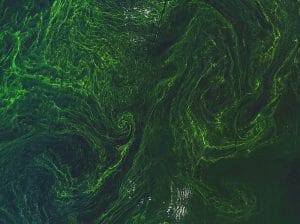Marine Snow Definition
Marine snow refers to organic particulate matter that constantly falls from the upper waters into the deeper waters of the ocean. Marine snow serves to provide food and energy from the productive upper waters exposed to sunlight to the marine organisms that reside in the deeper regions of the water column. The content and abundance of marine snow varies seasonally and with variations in ocean currents. This is largely due to the seasonal changes in light and resources available to the organisms in the upper water column.
Marine Snow Characteristics
Marine snow is comprised of primarily organic particulate matter derived from the bodies of phytoplankton, feces, and decaying plant materials. These particulates typically join to form larger aggregates that are coated in mucus created by bacterial, zooplankton, and phytoplankton species. As these aggregates sink toward the ocean floor, they often accumulate additional particles, and can grow up to several centimeters in size. Since the abundance of marine snow changes with the seasons and nutrient abundance in the upper waters, the abundance of marine snow often increases during algae blooms (pictured below) as a result of increased phytoplankton growth. It is also hypothesized that marine snow is involved in nutrient recycling within marine environments. In this way, the particulates both provide food for the organisms that reside in the deep waters, but also help to decompose the organic matter residing at the ocean floor (e.g., fecal matter) via the bacterial species that comprise the particulates of marine snow.
Quiz
1. Which of the following is NOT a feature of marine snow?
A. Marine snow is comprised primarily of inorganic matter.
B. Marine snow is more abundant during the winter months.
C. Marine snow is toxic to organisms that reside in the deeper waters of the ocean.
D. None of the above are features of marine snow.
References
- “Marine snow falls heaviest at the Equator.” (2017). Nature. Oct 1e1;550(7675):158. doi: 10.1038/550158b.
- Sun et al. (2017). Light-induced aggregation of microbial exopolymeric substances. Chemoshere. Aug;181:675-681.
- Tansel, B. (2018). Morphology, composition and aggregation mechanisms of soft bioflocs in marine snow and activated sludge: A comparative review. J Environ Mange. 205:231-243.
Marine Snow

I read your article and it is very nice & helpful thanks for sharing your work keep it up your work and tell us more interesting pieces of information thanks again for your work. Liposomal vitamin C
ReplyDelete